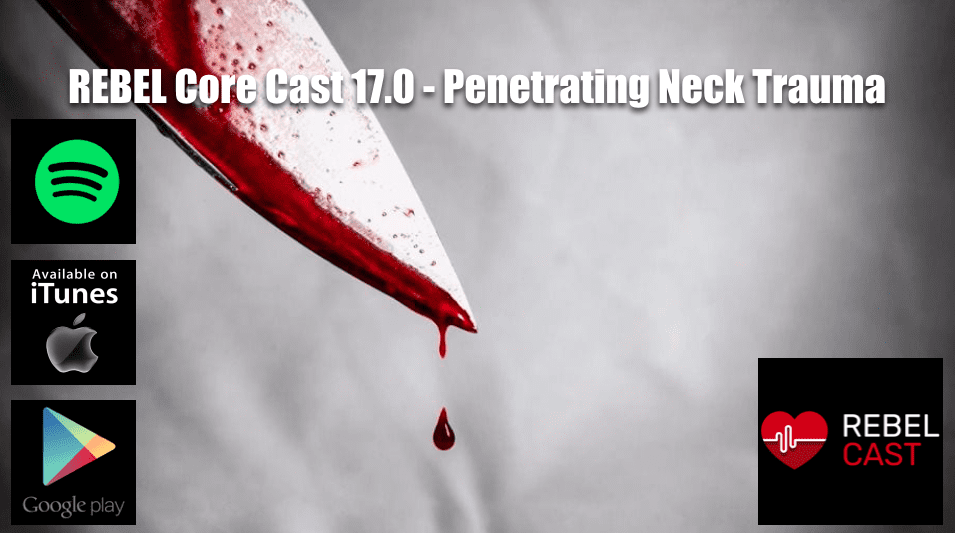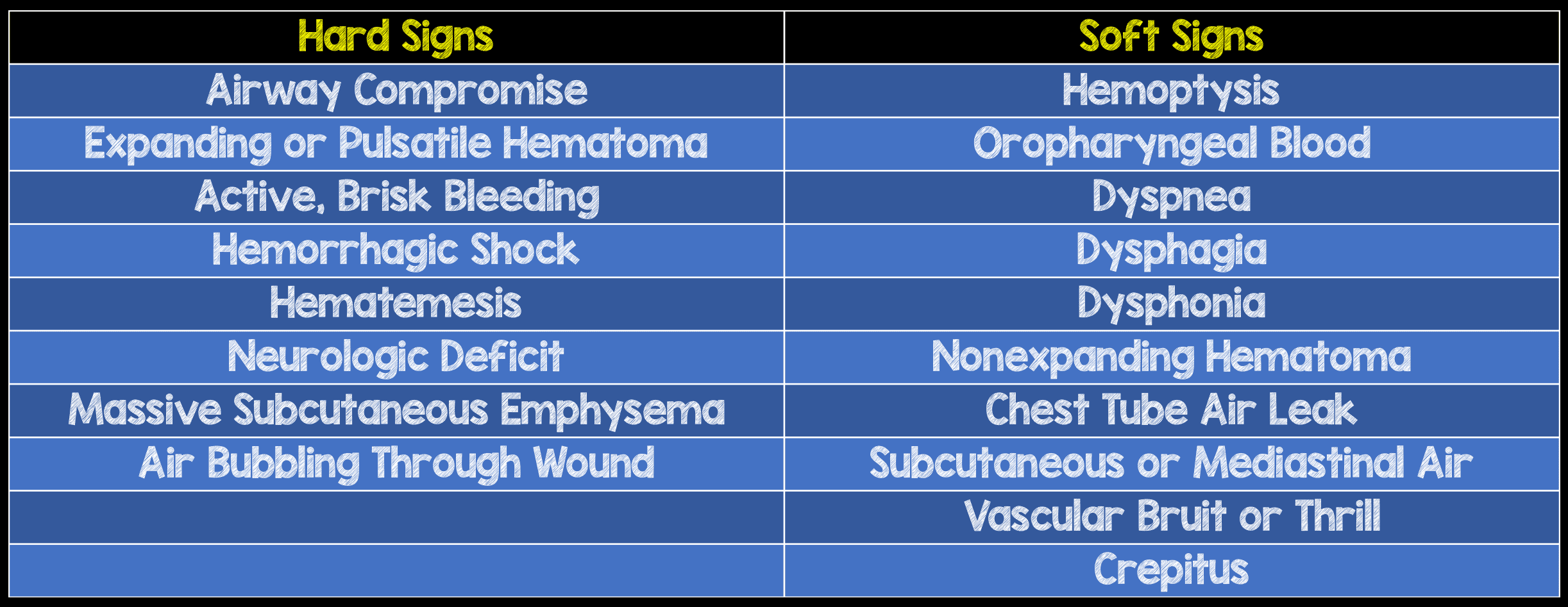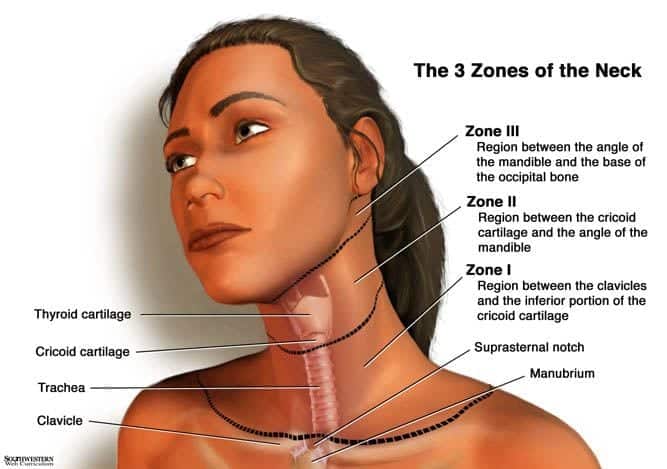
 Take Home Points:
Take Home Points:
-
Get definitive airway control when necessary
- Use modality you’re most comfortable with
- Hard signs – pulsatile bleeding, bruit or thrill, expanding hematoma, airway compromise, massive hemoptysis (think airway injury), hematemesis (think esophageal injury), grossly injured trachea, neurologic deficit, subcutaneous emphysema.
- Soft Signs are hypotension that resolves, stable hematoma, wound in proximity to major vascular structure, minor hemoptysis, dyspnea, dysphagia, chest tube air leak, vascular bruit or thrill (depends on surgeon).
- Hard Sign on presentation goes straight to the OR. Soft Sign on presentation gets some imaging done
- Resuscitate with blood products -> Activate massive transfusion protocol
- Most hemorrhage will respond to direct pressure
- Don’t miss other injuries!
REBEL Core Cast 17.0 – Penetrating Neck Trauma
Click here for Direct Download of Podcast
Show Notes
How to approach the airway:
- Be prepared for a difficult airway. Plan for a surgical airway and bring different size ETT and bougies.
- Due to the trauma, the airway can be quite challenging. Practice good basic airway management and resuscitate before you intubate.
- Indications to take it right away are severe distress, immediate airway compromise on presentation, exposed larynx or trachea.
- For the other patients, you’ll have some time. Resuscitate, get imaging and continue to monitor the patient for any changes.
-
Preferred airway approach
-
RSI & Video Laryngoscopy
- Remember to lead with suction catheter and the du canto approach
- If you have fiber optics and the skill for it – go for it
- If blood in airway -> direct laryngoscopy
- Have backups in place and be prepared for surgical airway
-
RSI & Video Laryngoscopy
Signs Management Algorithm
Hard signs – Patient needs to go to the OR
Soft Signs – need CT angiography.
Role of C-collars in penetrating trauma
- Probably not necessary
- The advantage of the collar is protecting patient with unstable C-spine injury (based on literature its a low occurrence)
- The disadvantage of the collar is you’re now limiting a more thorough exam, could be obstructing the extent of the wound, if bleeding wont be able to apply pressure and airway management with collar is significantly more difficult.
-
CAVEATS
- If altered mental status – keep the collar on
- If neurologic deficit – keep collar on
Zones of the Neck
-
Zone 1 – area between the clavicles and the cricoid cartilage
- Contains the innominate vessels, the origin of the common carotid artery, the subclavian vessels and the vertebral artery, the brachial plexus, the trachea, the esophagus, the apex of the lung, and the thoracic duct
-
Zone 2 – area between the cricoid cartilage and the angle of the mandible.
- Contains the carotid and vertebral arteries, the internal jugular veins, trachea, and esophagus.
-
Zone 3 – area between the angle of the mandible and the base of the skull.
- Contains the distal carotid and vertebral arteries and the pharynx.
- In practice, it’s not all that important to know the different zones
- Zone 2 injury used to be immediate OR indication. However studies have not borne that out and now patients can undergo imaging if no hard signs.
- When it may come into play is once you’ve diagnosed particular vascular / organ injury depending on what zone the injury is it could affect surgical intervention.
What to do if injury involves pulsatile bleeding
- Apply direct pressure to the wound / bleeding site.
- Get IV access, give oxygen, prepare to take the airway and get blood products
- If at trauma center -> get your trauma surgeon
- If community / rural -> stabilize and transfer
- Blood products means starting massive transfusion protocol.
Resources:
- EM: RAP: Penetrating Neck Trauma Part 1 and Part 2
- REBEL EM: Penetrating Neck Injuries
Shownotes Written By: Miguel Reyes, MD (Twitter: @miguel_reyesMD)
Post Peer Reviewed By: Salim R. Rezaie, MD (Twitter: @srrezaie)
The post REBEL Core Cast 17.0 – Penetrating Neck Trauma appeared first on REBEL EM - Emergency Medicine Blog.


